
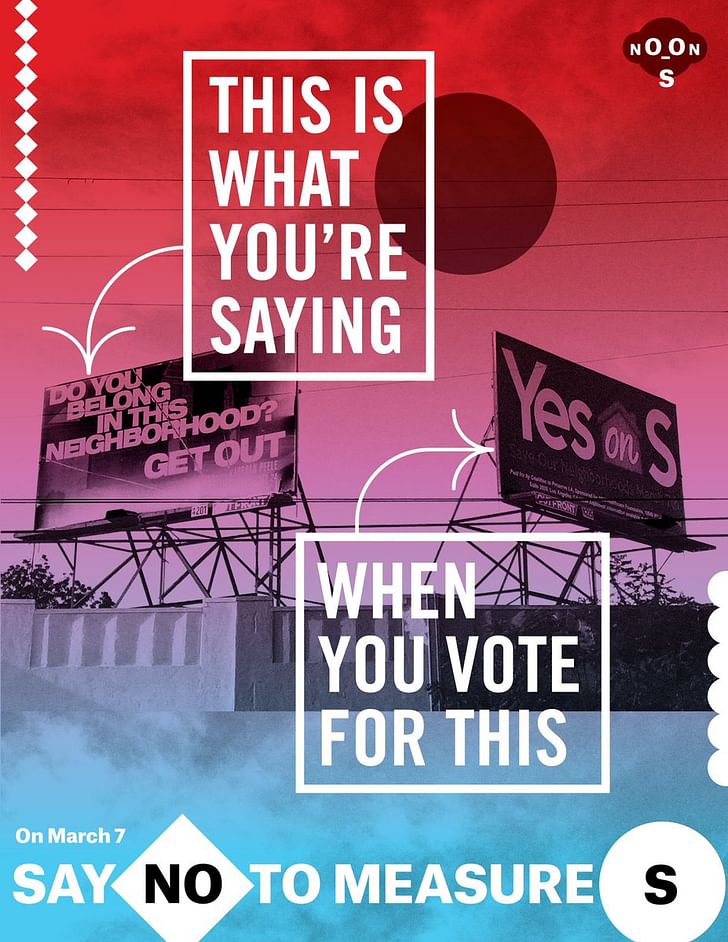
Opposed by a majority of architects, yet backed by a handful of prominent Angelenos including AIDS Healthcare Foundation President Michael Weinstein, Measure S is on the March 7th ballot. Is it a sneaky ratification of NIMBY, or a sensible call for considered growth?
One could argue that the inherent nature of Los Angeles is threatened by any attempt to stop its development. A city unconcerned with tradition, Los Angeles has long been famous for a decent quality of life [shouldn't be] something available only to those who bought property last centuryits juxtapositions. Downtown had single-family residential homes snuggled up against multi-story commercial buildings up into the early 1900s. On Sunset Boulevard, it’s still possible to have lunch in a low-slung hole-in-the-wall and then walk fifty feet to a massive corporate tower. But the fundamental character of the city is based on accessibility: and while no one wants to destroy this bemusing mix of shacks and skyscrapers, it’s also vitally important that Los Angeles remains a place where a decent quality of life is not something available only to those who bought property last century.
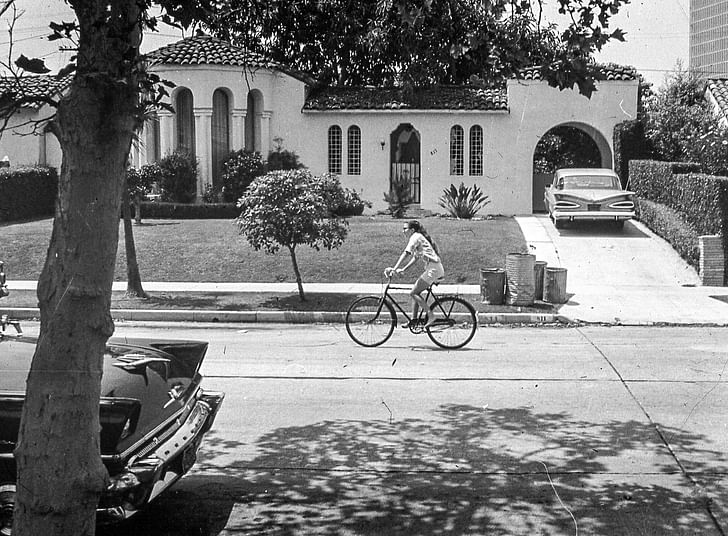
The one thing that proponents and opponents of Measure S agree on is that the city’s general plan and zoning code needs an update. What they don’t agree on is how to go about that change: many architects oppose Measure S because they view it as an attempt to strangle, not solve, the growth problems the city is facing. In the last few years, rents in Los Angeles have swollen as the amount of available housing has shrunk, and this trend is unlikely to reverse. Proposition S is being driven by great anxiety, citywideBy voting “no” on S, these architects feel that the city will at least be able to try to keep up with demand by not unilaterally freezing new project approval while waiting for the city to revise its code. Proponents, meanwhile, claim the measure will allow them to “preserve their neighborhoods,” which some read as a way of keeping their property values high while making those renters who can’t afford a run-of-the-mill million dollar home pay increasingly more for less.
“Proposition S makes an emotional appeal,” Eric Owen Moss says in a statement he wrote on the AIA website opposing the Measure. “Much as in the recent presidential election a political ‘virtue’ is simply asserted -- Measure S saves your neighborhood. Little analysis. Less explanation. What problem is it solving? When? What solution is it providing?”
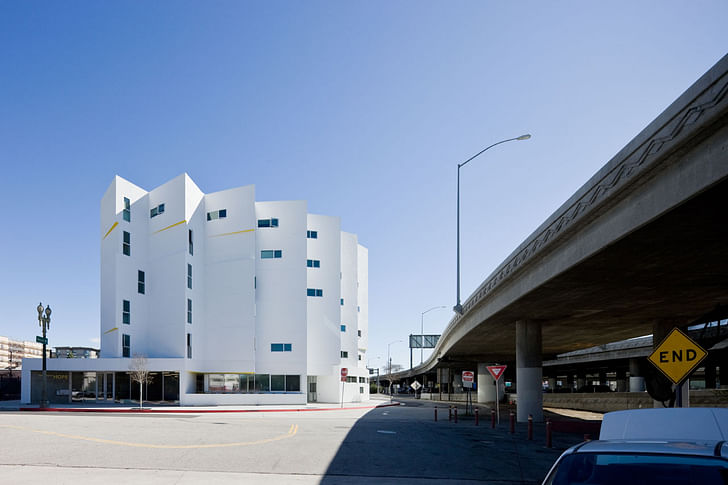
Will Wright, the Director of Government & Public Affairs at the AIA’s Los Angeles Chapter, has been working with members since December of 2015 to try and provide a solution to the logistical challenges Los Angeles is currently facing. In addition to gathering statements about Measure S from architects like Thom Mayne, Scott Johnson, and Tania Van Herle, Wright notes that “the impacts of development and the proliferation of construction is not a current condition unique to Los Angeles. If one travels to just about any other major city in the USA (Portland, Dallas, Seattle, New York, etc) we are experiencing an incredible building boom at the moment. This so-called boom is happening due to an international marketplace. With negative interest rates in Germany, Switzerland, Japan, etc., capital is parking itself in US Real Estate. We should embrace and channel this investment as a positive condition and not be fearful of change.”
He adds that, “in my opinion, the supporters of Measure S think that it will curtail evictions and displacement when, in fact, it actually has the potential detrimental impacts of acerbating displacement. If Measure S were to pass, capital will still search for a place to park in Los Angeles and therefore investment will be more apt to flow into buying existing homes and buildings that are existing on lots that are zoned for more than the current capacity of the building. For instance, there are many single family homes throughout Los Angeles that are sitting on R3 lots. If Measure S were to pass, there would be a tremendous amount of pressure to tear these homes down to build larger projects that an R3 zone allows.”
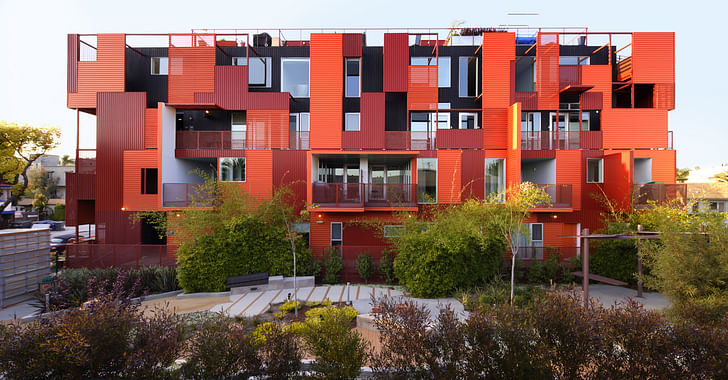
If this all feels a bit piecemeal, that’s because it is. So-called “spot zoning,” wherein developers win approval to build a property that doesn’t meet the restrictions of the 1946 L.A. city zoning code, has been one of the primary methods of new development in the city. Those developers who manage to sneak in an atrocious, non-contextual structure by virtue of contributing to the campaigns of well-placed officials can destroy the serenity of residents who love their street just the way it is. The problem with voting yes on Measure S is that it won’t necessarily halt this practice, just favor those already politically talented developers who know their way around a code. Voting ‘no’ at least keeps the door open for other suggested developments. If Measure S were to pass, there would be a tremendous amount of pressure to build larger projects that an R3 zone allows
As Michael Maltzan explains, “Proposition S is being driven by great anxiety, citywide, from the enormous pressures being felt in Los Angeles by rapid changes due to increasing density. That concern is real, and shared by many on both sides of this issue. Progressive responses to significant urban pressures, however, have rarely resulted from sweeping ‘no's’ to development. Development is necessary in our City, especially for the creation of all types of housing. We should continue to build: housing, public spaces, institutions, and space for business. We should also demand that those developments are the most creative possible to deal with our unique urban and civic needs. We should be advocating for more. More housing, more experimentation, more affordability, more community. Those are not mutually exclusive goals, but require a real and determined conversation between communities, leadership, buildings, developers, and designers. This is what we should be fighting for.”
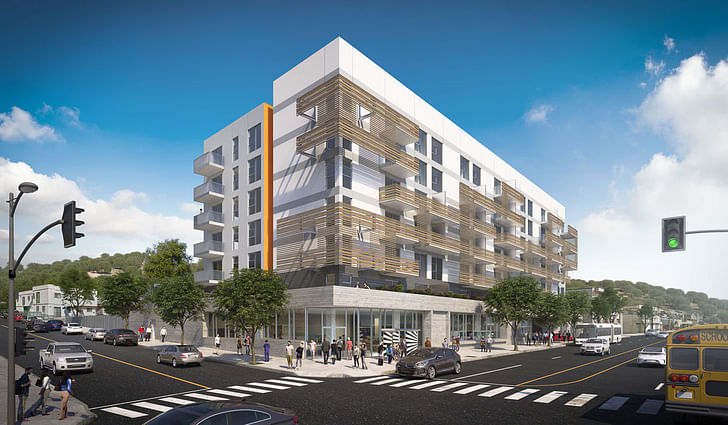
I asked Will Wright what he would ask voters to consider when they go to the polls, and he advocated for visualizing and planning for a collective future. “Let’s focus on establishing an equitable framework for how we can all attain the future we aspire for. Placing a moratorium on development is not a step towards an equitable future. It’s a divisive and retaliatory step backwards at exactly the wrong time, when instead we need to be more focused than ever on solutions to strengthen our stature as a global leader.”
Julia Ingalls is primarily an essayist. Her work has appeared or is forthcoming in Slate, Salon, Dwell, Guernica, The LA Weekly, The Nervous Breakdown, Forth, Trop, and 89.9 KCRW. She's into it.
No Comments
Block this user
Are you sure you want to block this user and hide all related comments throughout the site?
Archinect
This is your first comment on Archinect. Your comment will be visible once approved.